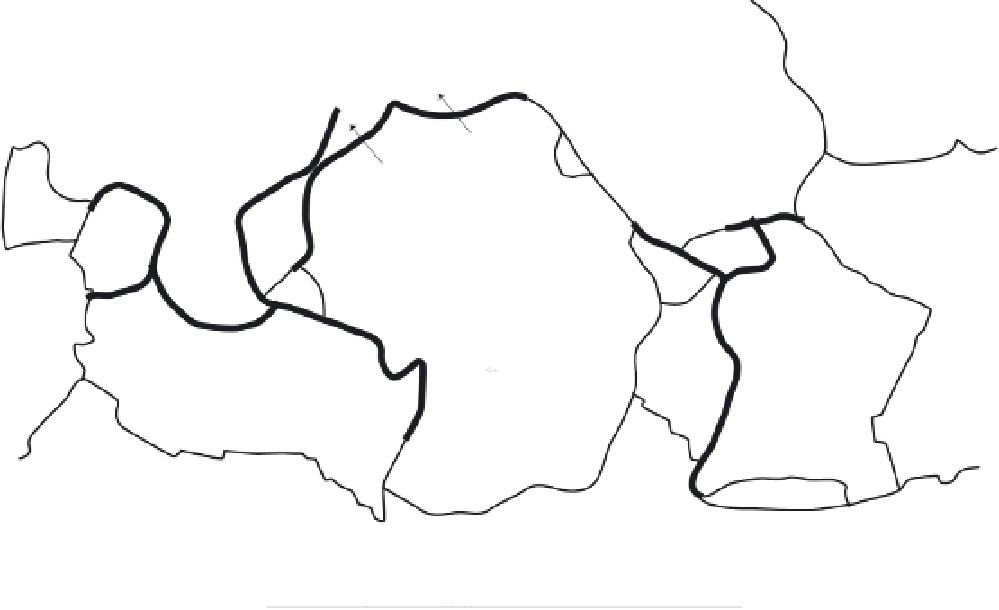Environmental Engineering Reference
In-Depth Information
2.9 Earth's tectonic plates, the directions and approximate
rates of their annual motion, and their boundaries. Based on
USGS (2003) and Kreemer, Holt, and Haines (2002).
and Pangea (formed 300-250 Ma ago, began to break
up about 200 Ma ago). Pangea spanned the planet latitu-
dinally, from the high Arctic to Antarctica. The latest
continental rifting is now underway in the Red Sea and
along the Great Rift Valley of East Africa.
The early model of a relatively few rigid plates sepa-
rated by narrow boundaries has been replaced by a more
nuanced understanding (Richards, Gordon, and Hilst
2000). Large parts of continent-bearing plates have dif-
fuse deformation zones, and at least 15% of the Earth's
surface does not behave in expected plate tectonic fash-
ion, as rigid plates with localized boundaries; the African
plate has not moved during the last 30 Ma. At the same
time, the dynamics and energetics of plate tectonic pro-
cesses remain poorly understood: plate tectonics and
mantle convection are obviously two aspects of the same
coupled system, but there is no consensus on the thermal
convection patterns within the mantle, on the coupling
between the two processes, and on the forces that drive
plate motions and create stresses within plates. The man-
tle, the layer of silicates and oxides that underlie the
lithosphere, extends to a depth of about 2900 km and



































































































































































































































































































































